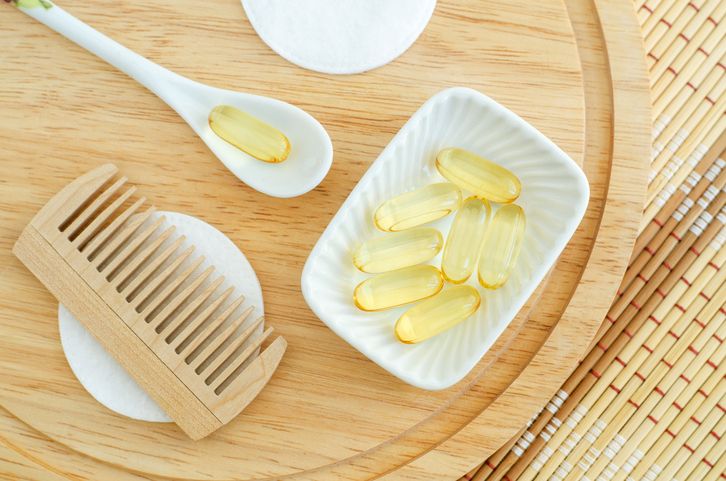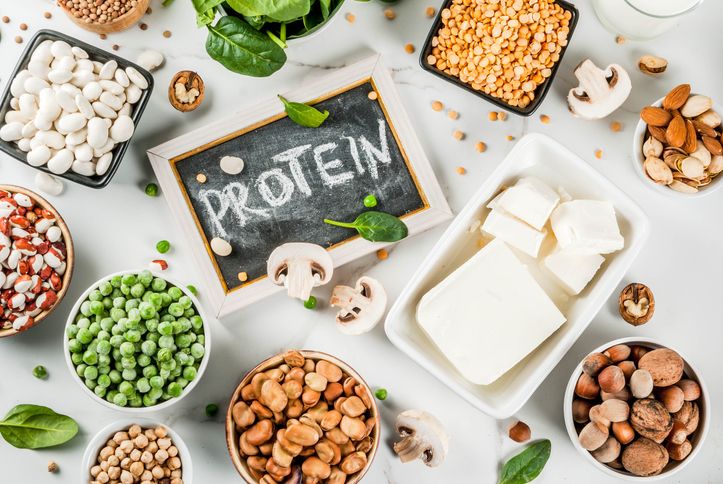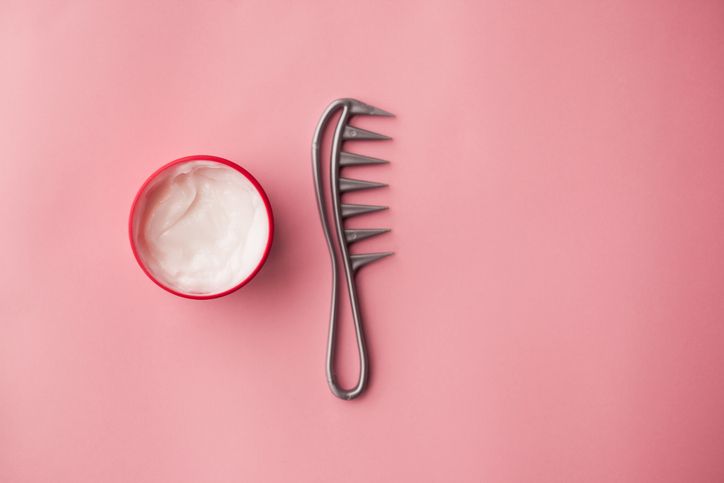
Author: Natalie Ng|Updated: 13 May 2025
Sodium is everywhere—and it adds up fast. Even if you're avoiding the salt shaker and steering clear of salty snacks, there’s a good chance you’re still getting too much sodium in your diet. It hides in everyday foods that seem harmless, making your low sodium diet harder to stick to than you think. You might already be checking for table salt, but sodium chloride also sneaks into packaged and prepared foods, salad dressings, protein bars, and even some so-called fresh or frozen vegetables. These hidden sources don’t just raise your sodium intake—they can lead to water retention, make you feel bloated, and slow down visible progress if you're trying to reduce body fat. High sodium foods may also impact your blood pressure and, over time, raise risks related to kidney disease and heart disease. If you’ve been eating clean and exercising but still feel like your results have stalled, sodium could be the reason. The sodium content of your meals might be higher than you think, especially if you rely on processed meats, canned vegetables, or bottled salad dressings. The next part of the article breaks down the top hidden sources of dietary sodium. Keep reading to find out which foods are making your sodium diet harder to manage—and what low sodium foods to choose instead.

Condiments and Sauces: The Silent Salt Offenders

Sodium load in small amounts
Many sauces and condiments taste mild but are packed with salt. Soy sauce, bottled salad dressings, ketchup, and barbecue sauce are some of the highest sodium foods used daily. Just one tablespoon of soy sauce has nearly 900mg of sodium. A small serving of ranch dressing can easily add 300mg more.
Effects on body and fat loss
This added salt increases water retention. That leads to bloating and slower physical changes, even with a clean diet. For anyone trying to lower sodium intake or manage blood pressure, sauces like these quickly become a problem.
Ingredients that increase sodium
Most store-bought condiments use sodium chloride for flavour and preservation. Processed sauces, marinades, and even mustard often include added salt and other sodium-heavy ingredients like monosodium glutamate.
Ways to reduce salt from sauces
Switch to low sodium salad dressing, low sodium sauces, or salt free versions. Choose foods without added salt, and check the sodium per serving on the nutrition facts label. Fresh lemon, olive oil, citrus juices, or homemade dressings are better options. These help you follow a lower sodium diet without sacrificing flavour.

Deli Meats and Cold Cuts: Hidden Salt in Everyday Protein
High sodium content in processed slices
Deli meats often seem like a convenient and lean option, especially turkey, chicken, or ham. But even the ones marketed as healthy are loaded with sodium. A 2-ounce serving of deli turkey can have up to 450mg of sodium. Pre-packaged chicken breast slices may reach 500mg per serving, while lean ham can hit over 600mg. That’s a major part of your daily salt intake—before you even add anything else to your meal.
Even deli meats labeled “low sodium” or “reduced sodium” aren’t truly low. These products still rely on sodium chloride and salt-based preservatives to stay fresh. Many also contain added salt for flavour, which adds up fast if you eat them regularly.
Effect on weight loss and blood pressure
Eating these high sodium foods leads to water retention, which can make your body feel heavier and look more bloated. That makes it harder to see fat loss progress and can impact blood pressure. If you’re already trying to follow a lower sodium diet or reduce your risk of heart disease or kidney disease, these meats work against those goals.
Better protein sources with less salt
Choose fresh foods like unsalted, freshly cooked chicken breast or fresh or frozen fish instead of packaged cold cuts. Preparing your own meat lets you avoid added salt and better control how much sodium is in your diet. You’ll also skip common additives like sodium nitrate, which are found in most packaged and prepared foods.
Book Now to Experience
S6 Body Sculpting Treatment
1 Minute Self-Registration
Date should not be before minimal date

Plant-Based Meat Alternatives: More Salt Than You Think

Sodium levels in meat-free products
Plant-based meats are often seen as a healthier swap for traditional meat, but many are packed with sodium. A single veggie burger can contain up to 690mg of sodium. That’s far more than the 65–75mg found in a plain beef or chicken patty. Some meatless sausages and deli slices also carry over 600mg of sodium per serving.
To create a similar taste and texture to real meat, these products often use high levels of sodium chloride and other sodium-based compounds. You’ll find ingredients like sodium phosphate, sodium ascorbate, and sodium citrate on the label—even in products labeled as “low sodium” or “natural.”
Additives that increase total intake
Many plant-based items list multiple sodium-containing ingredients under different names. This makes it harder to track how much sodium you're actually eating. Terms like monosodium glutamate, disodium inosinate, sodium benzoate, and sodium erythorbate all add to your total salt intake without sounding like traditional salt.
Even if you're trying to follow a reduced sodium or lower sodium diet, these hidden ingredients can make it harder. They raise your dietary sodium without the obvious salty taste and contribute to water retention and slower fat loss.
Better swaps with less sodium
Choose foods made with whole ingredients and fewer preservatives. Fresh or frozen vegetables, fresh or frozen fish, and unsalted nuts are better options if you're cutting back on added salt. If you prefer meat alternatives, look for brands that list lower sodium per serving clearly on the nutrition facts label and avoid products with a long list of chemical additives.

Pre-Made Smoothies and Sports Drinks: Sodium in Disguise
High sodium hidden behind health claims
Pre-made smoothies and sports drinks often seem like smart choices after a workout. But many of these drinks contain more sodium than expected—especially when labeled with terms like “electrolyte blend” or “mineral boost.” A single bottle can quietly add 200–400mg of sodium to your diet, depending on the brand and serving size.
Manufacturers use sodium chloride and other forms of added salt to improve flavour, shelf life, and hydration balance. These ingredients contribute to total sodium intake without tasting overly salty, making them easy to overlook.
Effects on fat loss and hydration
Extra sodium in these drinks can cause your body to retain water, making you feel bloated and masking changes on the scale. You might also see a rise in blood pressure, especially if you’re already consuming salty foods or processed products. Some drinks contain added sugars too, which can increase overall calorie intake and interfere with fat loss goals.
Drinking these products often also confuses thirst with hunger. That can lead to snacking or eating more than your body needs, further slowing progress.
Lower sodium ways to hydrate
Check the nutrition facts label before choosing bottled drinks. Pay attention to both the sodium per serving and the total servings per container. For a lower sodium option, make your own smoothies using fresh foods, unsweetened low sodium vegetable juice, or fresh lemon and citrus juices blended with unsalted fruits or dried fruits.

Restaurant Salads: Sodium from Every Layer
Dressings and toppings increase salt intake
Restaurant salads can easily exceed sodium limits, even without tasting salty. Popular toppings like bacon bits, croutons, and shredded cheese contain added salt. These extras are often seasoned or processed, which increases sodium per serving without needing table salt.
Creamy dressings such as ranch or thousand island often add another 200–400mg of sodium in just two tablespoons. In restaurants, the amount used is usually more than that, sometimes double or triple.
Extra salt in marinated proteins
Grilled chicken or shrimp on salads might seem like a lean choice, but they’re usually pre-seasoned or brined. These preparation methods rely on sodium chloride to boost flavour and preserve texture, adding more salt than expected to a single meal.
Ways to lower sodium while eating out
Ask for dressing on the side and choose oil-based or vinegar-based options. Skip high sodium toppings like cheese spreads or salted nuts, and choose fresh or frozen fish or plain grilled protein when available. These swaps help reduce sodium per serving without sacrificing the structure of your meal.
Book Now to Experience
S6 Body Sculpting Treatment
1 Minute Self-Registration
Date should not be before minimal date

Low Sodium Breakfast? Not Always the Case
Salt content in everyday morning staples
Instant oatmeal and boxed cereals are often viewed as simple, healthy options. But many of these foods contain added salt. A single packet of flavoured oatmeal can have up to 200mg of sodium. Some breakfast cereals include more sodium than salty snacks like salted nuts or salted crackers, even without tasting overly salty.
These products often rely on sodium chloride and other salt-based preservatives like sodium phosphate to extend shelf life and improve flavour. This adds to your sodium intake early in the day without making it obvious.
Why it slows visible progress
A high sodium breakfast can cause water retention, leading to a puffy appearance and delayed fat loss results. For those following a sodium diet to manage blood pressure or reduce bloating, this early intake can interfere with daily goals.
Lower sodium swaps for breakfast
Switch to plain steel-cut or rolled oats without added salt. Choose low sodium foods clearly labeled on the packaging, and avoid breakfast items with sodium-based additives. Add fresh fruits, fresh lemon, or unsalted nuts for flavour instead of relying on processed toppings.

Cottage Cheese and Dairy
Hidden sodium in popular high-protein options
Cottage cheese is often seen as a smart pick for fat loss because it’s high in protein. But it’s also one of the dairy products with the highest sodium content. One cup can contain up to 900mg of sodium—nearly 40% of the recommended daily limit. That’s a significant amount for a single item, especially if you’re trying to follow a lower sodium diet.
Other dairy products also add to your daily sodium intake. Processed cheese slices, cheese spreads, and even reduced-fat versions often use added salt to maintain taste and texture. These choices can make it harder to control how much sodium you’re getting, especially if you’re eating multiple servings a day.
Why it affects weight loss and health
High sodium foods like these can increase water retention, making your body hold on to weight. This makes it more difficult to track fat loss and may also raise your blood pressure over time. If you're trying to reduce your salt intake, dairy can quietly push your levels higher without adding much flavour.
Smarter dairy choices
Check the nutrition facts label before choosing cheese or yogurt. Look for low sodium foods or options with “no salt added.” Plain Greek yogurt is a good alternative—it has less sodium than cottage cheese but still offers a high amount of protein. You can also pair it with fresh or frozen vegetables or unsalted nuts for a balanced, low sodium meal.

Canned Vegetables and Soups: More Sodium Than Fresh Options
High sodium in shelf-stable foods
Canned vegetables and ready-to-eat soups are popular for their convenience. But they’re also some of the highest sodium foods in most kitchens. A single serving of canned soup can contain up to 40% of your daily recommended sodium intake. Many canned vegetables are packed in liquids with added salt, increasing sodium per serving without adding much flavour.
Even options labeled as “reduced sodium” or “low sodium” still contribute to your daily salt intake—especially if you're eating more than one serving. This is a problem for anyone trying to stick to a lower sodium diet or reduce the impact of dietary sodium on blood pressure.
How it affects weight and health
Excess sodium leads to water retention, which can make your body feel bloated and stall visible fat loss. It also puts more strain on the cardiovascular system, especially for people managing high blood pressure or kidney disease. These foods often appear harmless but can quickly push salt intake above recommended limits.
Lower sodium ways to keep meals simple
Choose low sodium or no salt added canned vegetables whenever possible. Rinse canned items like canned beans and canned vegetables under water to wash away some of the extra salt. You can also switch to fresh and frozen vegetables or frozen fish, which often contain less sodium and no added preservatives. These options make it easier to follow a sodium diet without giving up convenience.
Book Now to Experience
S6 Body Sculpting Treatment
1 Minute Self-Registration
Date should not be before minimal date

High Sodium in Protein Bars and Workout Supplements

Sodium used for structure, not just flavour
Protein bars, shakes, and workout powders often seem like clean, efficient sources of nutrition. But many of them are high sodium foods. These products use sodium chloride and other sodium-based compounds to improve texture, enhance mixability, and maintain shelf stability—not just for taste.
You’ll often find ingredients like sodium citrate, sodium bicarbonate, and monosodium phosphate in their formulations. These compounds don’t always taste salty, so it’s easy to overlook how much sodium they add. A single bar can contain over 300mg of sodium, while pre-workout drinks or recovery powders can range between 100–300mg per scoop.
Impact of regular use on sodium intake
If you’re using these products daily, they can significantly increase your total salt intake. This is especially true if they’re combined with other packaged and prepared foods throughout the day. Even without a strong salty flavour, the sodium content builds up, increasing the risk of high blood pressure and water retention.
For people following a sodium diet or trying to reduce salt intake to support fat loss, these products can quietly work against those goals. Because they’re marketed as fitness-friendly, most users don’t think to check the nutrition facts label for sodium per serving.
Better ways to support recovery and energy
Look for low sodium protein bars or powders made with fewer additives. Avoid products with multiple sodium-based ingredients listed. Choose foods that offer clean protein without added salt—like fresh or frozen fish, unsalted nuts, or low sodium vegetable juice blended into a post-workout smoothie. These swaps reduce extra salt in your diet without sacrificing nutrition.

Bread and Baked Goods: Hidden Sodium in Everyday Staples

Salt used in baking for structure and preservation
Bread, bagels, muffins, and other baked goods are a regular part of many diets, but they often come with high levels of sodium. Commercial bakeries rely on salt not just for taste but to control fermentation and strengthen dough. That means added sodium chloride is part of almost every loaf or pastry.
A single slice of sourdough can have up to 400mg of sodium. A bagel can contain more than 500mg. Smaller items like dinner rolls or baked goods from cafés often add another 150–350mg. These foods don’t always taste salty, which makes it easy to underestimate the sodium content.
Repeated intake increases sodium load
These foods are often eaten multiple times a day—toast at breakfast, a sandwich at lunch, a roll or pastry with dinner. That repetition increases total sodium intake quickly. Combined with other packaged and prepared foods, this pattern contributes to water retention and raises salt intake above what dietary guidelines recommend. For people managing blood pressure or following a sodium diet, this daily buildup can interfere with both fat loss and health goals.
Practical swaps to reduce salt
Choose fresh foods or baked items labeled as low sodium or reduced sodium. Some brands offer options made without added salt. At home, using less salt or salt substitutes in baking can help reduce total intake. Pair baked items with fresh lemon, olive oil, or unsalted butter instead of spreads with extra salt. These changes make it easier to follow a lower sodium diet while still including bread in your routine.

S6 Body Sculpting Treatment: Supporting Fat Loss Beyond Diet
Enhancing results with body contouring technology
Even if you’ve adjusted your diet and started choosing low sodium foods, progress can feel slow—especially in areas where fat is harder to lose. That’s where the S6 Body Sculpting Treatment can help. It’s a non-invasive therapy designed to target and reduce stubborn fat in specific areas like the belly, thighs, arms, and back—places that often hold on to fat despite a lower sodium diet or improved eating habits.
While a low sodium diet supports fat loss by reducing water retention and bloating, the S6 treatment works to eliminate fat cells directly. This dual approach—focusing on both sodium intake and fat cell reduction—can lead to more visible changes in your body shape.
How the treatment works
S6 uses a low-energy bio-laser that penetrates the fat layer beneath your skin. This laser energy encourages fat cells to release fatty acids, which are then cleared through the body’s lymphatic system. At the same time, vacuum suction technology boosts metabolism in the treated area, improving circulation and promoting faster fat breakdown. The laser also stimulates collagen, helping firm and smooth the skin.
Each session targets areas like the waist, arms, thighs, or lower buttocks—spots where fat often stays put, even when you're following dietary guidelines or choosing low sodium salad dressing and avoiding processed foods.
Benefits of S6 Body Sculpting Treatment
• Targets stubborn fat in seven key areas of the body
• Non-surgical and non-invasive—no injections, no downtime
• Speeds up metabolism and supports lymphatic drainage
• Tightens skin while reducing fat
• Complements dietary changes, including a lower sodium diet
• Suitable for most body types, with treatment plans tailored to your needs
Combine smarter food choices with targeted fat reduction
If you’ve already started reducing salt intake, avoiding packaged foods, or switching to low sodium sauces, adding a treatment like S6 can take your progress further. It addresses what diet alone may not fix—especially in areas where fat resists change.
Book S6 today and see how the S6 Body Sculpting Treatment can work alongside your lower sodium diet to help define your shape and support your fat loss goals.Book Now to Experience
S6 Body Sculpting Treatment
1 Minute Self-Registration
Date should not be before minimal date
FAQ
FAQ 1: Can a high sodium diet affect body fat or just water weight?
Yes, while sodium doesn’t directly cause fat gain, a high sodium diet can indirectly affect fat loss progress. High salt intake leads to water retention, which can cause temporary weight gain and make the body appear bloated. This extra fluid masks true fat loss, making progress harder to notice. Long-term high sodium intake may also affect appetite regulation and energy levels, both of which can influence weight gain and body composition.
FAQ 2: Are fresh or frozen fish better for a low sodium diet?
Both fresh fish and frozen fish can be excellent options for a low sodium diet, but it depends on how they’re processed. Fresh fish usually contains very little sodium unless seasoned or cured. Frozen fish can also be low sodium if it’s plain and not pre-seasoned or packed in salty brine. Always check the nutrition facts label—some frozen varieties have salt added for preservation, increasing sodium content per serving.
FAQ 3: What are some low sodium alternatives to salty snacks?
If you're trying to lower salt intake, good alternatives to salty snacks include unsalted nuts, unsalted popcorn, raw vegetables with olive oil, or baked sweet potatoes. You can also season snacks with fresh lemon, herbs, or salt substitutes to maintain flavour without relying on added salt. These swaps help reduce overall sodium in your diet without sacrificing taste or satisfaction.
FAQ 4: How can I check if packaged foods are really low sodium?
To identify low sodium foods, look for options with 140mg of sodium or less per serving. Read the nutrition facts label carefully—some items labeled “reduced sodium” still contain high amounts. Pay attention to serving sizes and ingredients like monosodium glutamate, sodium benzoate, or disodium phosphate, which all add to your total sodium intake even if they don’t sound like salt.
FAQ 5: Can I combine a low sodium diet with other fat loss treatments?
Yes, following a low sodium diet can work well alongside non-invasive fat reduction methods like the S6 Body Sculpting Treatment. Reducing sodium helps with water balance and bloating, while treatments like S6 target subcutaneous fat in stubborn areas. This combined approach supports visible, long-term results—especially for those struggling with body fat that doesn’t respond to diet changes alone.
Recommended Articles
COPYRIGHT© NEW BEAUTY MANAGEMENT LIMITED 2025. ALL RIGHT RESERVED.




